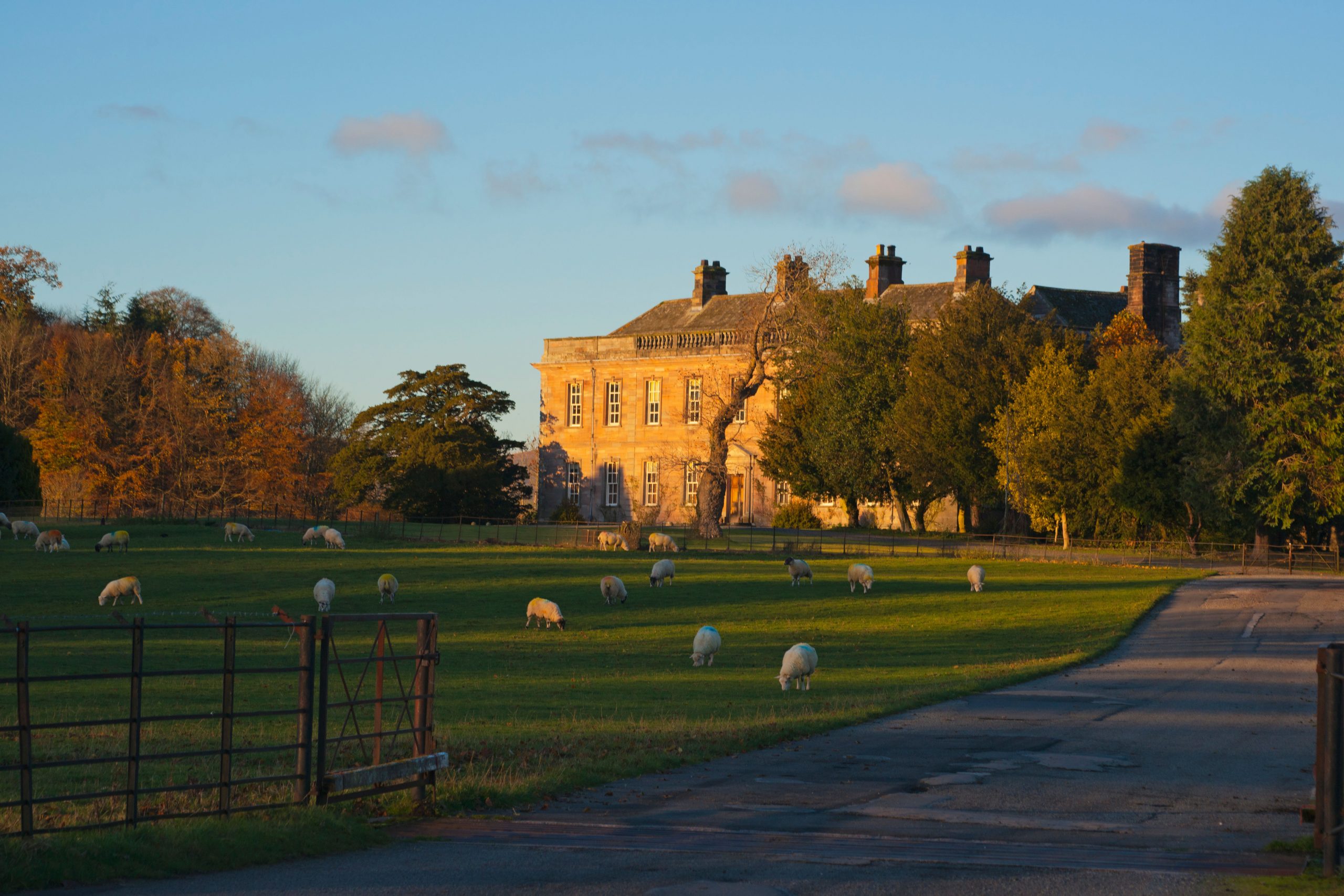Jason Goodwin: How to hold the biggest marmalade competition the world has ever seen in the teeth of a gale-force storm
Ahead of the storms which battered Britain a week or so ago, Jason Goodwin filed his dispatches from Dalemain, a beautiful Lake District stately home, where a rather unusual competition was taking place.

By the time you read this, our fates will have long been sealed. High winds are set to hammer the Lakes, to sweep in rain and sleet, stop trains, topple trees and knock out power lines across Cumbria and the North. As I write, however, it is still — very still.
At Dalemain, where we are hunkering down, they say the house has roots. A house has stood here since Norman times, judiciously placed between three weather systems that can leave the site unscathed when all about is chaos and tempest. Storms Arwen, Barra and Corrie passed it by: Storms Dudley and Eunice, we hope, will do the same. There are worse bunkers, too, than Dalemain.
We are sleeping in a fine old panelled room, the panelling dark, small and 16th century. The floor slopes, as the centuries entitle it to slope. A door, invisible in the woodwork except for the gleam of brass, opens into another, smaller bedroom, which you must cross to reach the winding stone stair to the Norman hall beneath. Two narrow sash windows open onto a small internal courtyard, protected on all four sides by high walls against the elements. Where a window might be set into the outside wall, a low door gives onto a turreted space that once held a staircase leading to a minstrels’ gallery. Later, it became a prayer closet. Now it houses a mop and bucket, plus a ghost or two, and stands sentinel against the wind on the hills beyond.
Held in the eye of the coming storm there may be, as I reckon, some dozen people in the house, together with six staircases, 52 clocks, a mangle, a huge ham and at least 3,000 jars of marmalade, entries to what has rapidly become the biggest marmalade competition the world has ever seen.
I use the word ‘world’ advisedly: ever-increasing entries come from far-flung marmaladiers in Taiwan, Japan, Australia and Zambia, to name a few. They bring a new level of surprise and sophistication to the humble British jar, concocted from Spanish oranges and sugar on the model laid down in about 1800 by Mrs Keiller of Dundee: marmalades of kumquat and limequat, of pomello and meyer lemon. Marmalades flavoured with rum or whisky, chocolate or basil, star anise and west African vanilla… Marmalades so weird and unexpected you wonder if they are go with toast at all, marmalades made with fruit so fresh it hurts, marmalades pretty, marmalades hearty, marmalades professional, amateur and B&B.
At Dalemain, a line has to be held and the line is that a marmalade must set. It need not be finely shredded, or even clear, but tradition demands a perfect set. Too much pectin and the gel is grainy. Too much sugar and it develops a slightly unwelcome high sheen. The stage is set for half a dozen volunteer judges, drawn from the worlds of food and cookery, to spend a week tasting and considering jars against the light, in a high corner room heated by a coal fire.
Tasting is carefully controlled — anonymised, standardised — and transmitted to a printed sheet, each jar marked for presentation, texture, flavour and ‘overall harmony’. The accent is on encouragement, not condemnation: when anyone awards a rare and coveted gold, they are entitled to ring a handbell and all the judges clap and cheer.
Sign up for the Country Life Newsletter
Exquisite houses, the beauty of Nature, and how to get the most from your life, straight to your inbox.
There are, as I write, a few more jars to go, the gold contenders stacked on a tray against the wall. The atmosphere in the room is like a medieval scriptorium, heads bowed over tasting notes, the soft clatter of tasting spoons dropped into tubs, the murmur of confabulation. By the time you read this, we will have suffered a storm and found a winner, a Dalemain gold of golds.
-
 Vertigo at Victoria Falls, a sunset surrounded by lions and swimming in the Nile: A journey from Cape Town to Cairo
Vertigo at Victoria Falls, a sunset surrounded by lions and swimming in the Nile: A journey from Cape Town to CairoWhy do we travel and who inspires us to do so? Chris Wallace went in search of answers on his own epic journey the length of Africa.
By Christopher Wallace
-
 A gorgeous Scottish cottage with contemporary interiors on the bonny banks of the River Tay
A gorgeous Scottish cottage with contemporary interiors on the bonny banks of the River TayCarnliath on the edge of Strathtay is a delightful family home set in sensational scenery.
By James Fisher